It looks like you're using an Ad Blocker.
Please white-list or disable AboveTopSecret.com in your ad-blocking tool.
Thank you.
Some features of ATS will be disabled while you continue to use an ad-blocker.
12
share:
ESA has recently released this image of the South Pole of Mars. The image was taken by the Mars Express orbiter in infrared, green, and blue light.
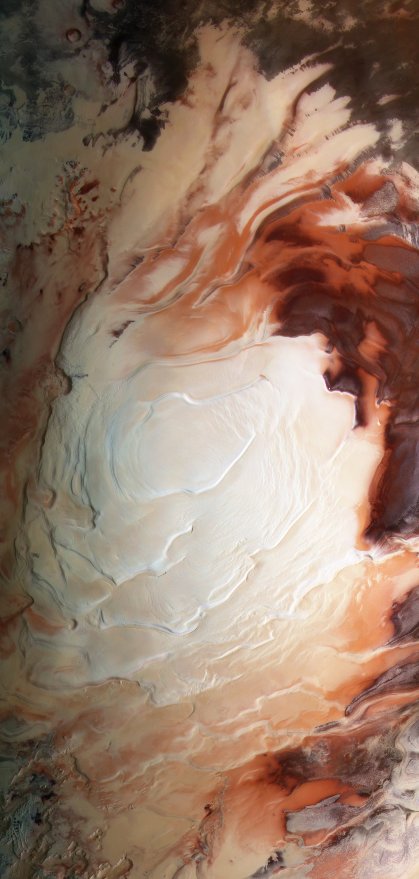
High Resolution
It's made up of frozen carbon dioxide, frozen water ice and dust.
Thay have also used ground penetrating radar to look underneath the surface. In the image below, the MARSIS radar on the Mars Express orbiter penetrates to a deeper depth but has less detail. The SHARAD radar on the Mars Reconnaissance Orbiter works at higher frequencies and provides greater detail, but less depth. The layers are made up of frozen ice and dust.
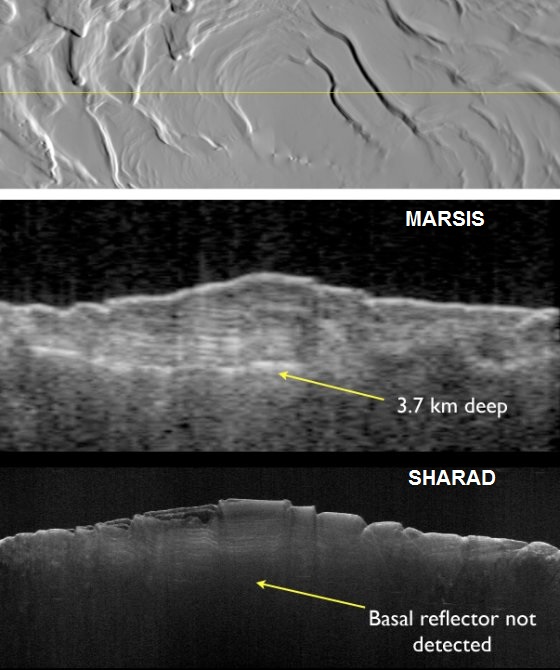
High Resolution
www.planetary.org...
www.universetoday.com...
In the lower left of the image, I found this strange area. Any guesses as to what that honeycomb like structure is?
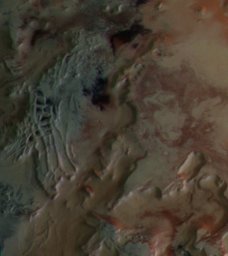

High Resolution
It's made up of frozen carbon dioxide, frozen water ice and dust.
Thay have also used ground penetrating radar to look underneath the surface. In the image below, the MARSIS radar on the Mars Express orbiter penetrates to a deeper depth but has less detail. The SHARAD radar on the Mars Reconnaissance Orbiter works at higher frequencies and provides greater detail, but less depth. The layers are made up of frozen ice and dust.

High Resolution
www.planetary.org...
www.universetoday.com...
In the lower left of the image, I found this strange area. Any guesses as to what that honeycomb like structure is?

reply to post by ionwind
That first image is beautiful....
...but now I'm suddenly hungry for strawberry swirl ice cream.
That first image is beautiful....
...but now I'm suddenly hungry for strawberry swirl ice cream.
edit on 8/14/2013 by Soylent Green Is People because: (no reason given)
Some kind of structure comes to mind. Hard stone walls and probably some biodegradable (Not sure if that terms apply here) Material such as wood or
some mars equivalent to our metal roofing.
Of course its speculation, man has always been attracted to mars. Is could be possible we originated there.
I'm sure enough time has passed since around the end of the last ice age that all evidence could have been wiped off the face of mars through natural processes.
Of course its speculation, man has always been attracted to mars. Is could be possible we originated there.
I'm sure enough time has passed since around the end of the last ice age that all evidence could have been wiped off the face of mars through natural processes.
edit on 8/14/2013 by shaneslaughta because: (no reason given)
There is also a spot just of to the right side of the OP zoomed image, something with hard ninety degree corners.
I love this picture. To think we are supposed to have a Colony there by 2023 is amazing. What TRUTHS mars may behold fascinates me.
I love this picture. To think we are supposed to have a Colony there by 2023 is amazing. What TRUTHS mars may behold fascinates me.
edit on 8/14/2013 by shaneslaughta because: (no reason given)
Looks like a head with fire hair you can see eye's nose and mouth! Could this be a new conspiracy?
What's remarkable is that it's not an officially released image - it was created by a member of public from raw Mars Express image data. I like to
dabble in such things myself, so I'm interested in getting access to Mars Express data. Anyone got the link?
Amazing image, by the way.
Taking a stab at it, but it may be erosional features, covered in frost but with some dark sand exposed in the pits. Or those may be frost-covered dark sand dunes, and those pits is where the frost sublimated.
Amazing image, by the way.
Originally posted by ionwind
In the lower left of the image, I found this strange area. Any guesses as to what that honeycomb like structure is?
Taking a stab at it, but it may be erosional features, covered in frost but with some dark sand exposed in the pits. Or those may be frost-covered dark sand dunes, and those pits is where the frost sublimated.
edit on 14-8-2013 by wildespace because: (no reason given)
Originally posted by shaneslaughta
There is also a spot just of to the right side of the OP zoomed image, something with hard ninety degree corners.
I love this picture. To think we are supposed to have a Colony there by 2023 is amazing. What TRUTHS mars may behold fascinates me.
edit on 8/14/2013 by shaneslaughta because: (no reason given)
It's amazing more than 100,000 people would take the one way trip to Mars and not return. Maybe some of alive today will get there.
What I highlighted do look like ruins, but are there natural explanations?
Originally posted by ionwind
What I highlighted do look like ruins, but are there natural explanations?
Maybe, crystalline structures will remain for longer than the stone surrounding them as they are much harder.
Hard corners like that are another sign that it could be crystalline.
Did natural processes create them and time uncovered them, or are they a structure built by another race or even our own, in our past. Anything i say would be speculation as of now.
edit on 8/14/2013 by shaneslaughta because: (no reason given)
Originally posted by wildespace
What's remarkable is that it's not an officially released image - it was created by a member of public from raw Mars Express image data. I like to dabble in such things myself, so I'm interested in getting access to Mars Express data. Anyone got the link?
I know, Bill Dunford says he got them from the ESA Mars Express image archives. He also credits G. Neukum (Freie Universitaet, Berlin).
Looking for those archives now...
The "honeycomb" area, called Angustus Labyrinthus, and informally called Inca City, as
seen by MRO's CTX camera (Google Earth screenshot, tilted)

It has also been extensively imaged by MRO's HiRISE camera. hirise.lpl.arizona.edu...
An image detail from the above link, showing cracks in the frost, and dark sand flowing down slope:
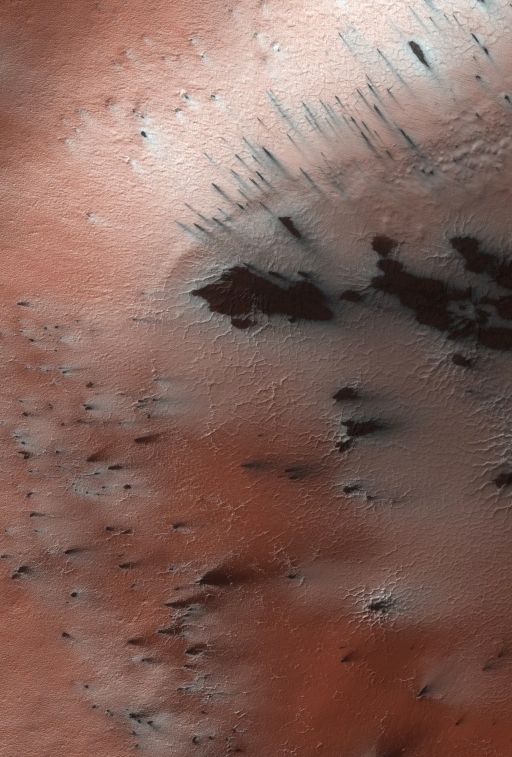

It has also been extensively imaged by MRO's HiRISE camera. hirise.lpl.arizona.edu...
An image detail from the above link, showing cracks in the frost, and dark sand flowing down slope:

What I found interesting in this image, is that there is some blue in the shadowed parts of the polar cap near the terminator line (left side of the
image).
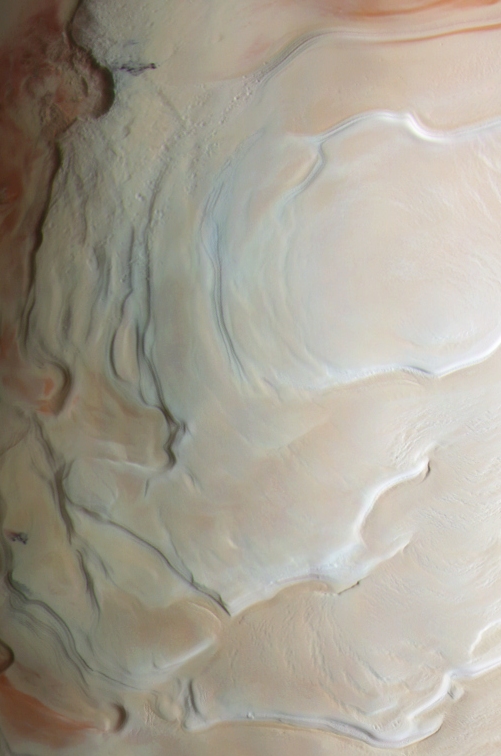
You normally see such blue shadows in the snow on a sunny day on Earth, due to the ambient light from the blue sky.
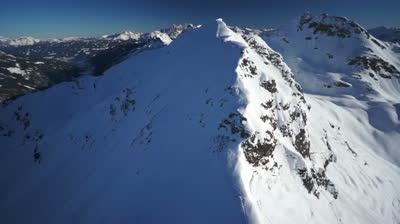
The sky on Mars isn't blue during the day, but it turns blue near the Sun at sunset or sunrise, due to the particular light-scattering conditions of the dusty atmosphere. The setting / rising Sun on Mars is actually also blue. geonews.tamu.edu...

You normally see such blue shadows in the snow on a sunny day on Earth, due to the ambient light from the blue sky.

The sky on Mars isn't blue during the day, but it turns blue near the Sun at sunset or sunrise, due to the particular light-scattering conditions of the dusty atmosphere. The setting / rising Sun on Mars is actually also blue. geonews.tamu.edu...
new topics
-
Thousands Of Young Ukrainian Men Trying To Flee The Country To Avoid Conscription And The War
Other Current Events: 3 minutes ago -
12 jurors selected in Trump criminal trial
US Political Madness: 2 hours ago -
Iran launches Retalliation Strike 4.18.24
World War Three: 2 hours ago -
Israeli Missile Strikes in Iran, Explosions in Syria + Iraq
World War Three: 3 hours ago -
George Knapp AMA on DI
Area 51 and other Facilities: 9 hours ago -
Not Aliens but a Nazi Occult Inspired and then Science Rendered Design.
Aliens and UFOs: 9 hours ago -
Louisiana Lawmakers Seek to Limit Public Access to Government Records
Political Issues: 11 hours ago
top topics
-
BREAKING: O’Keefe Media Uncovers who is really running the White House
US Political Madness: 16 hours ago, 25 flags -
George Knapp AMA on DI
Area 51 and other Facilities: 9 hours ago, 24 flags -
Biden--My Uncle Was Eaten By Cannibals
US Political Madness: 17 hours ago, 18 flags -
Israeli Missile Strikes in Iran, Explosions in Syria + Iraq
World War Three: 3 hours ago, 12 flags -
"We're All Hamas" Heard at Columbia University Protests
Social Issues and Civil Unrest: 17 hours ago, 7 flags -
Louisiana Lawmakers Seek to Limit Public Access to Government Records
Political Issues: 11 hours ago, 7 flags -
So I saw about 30 UFOs in formation last night.
Aliens and UFOs: 14 hours ago, 5 flags -
Iran launches Retalliation Strike 4.18.24
World War Three: 2 hours ago, 5 flags -
Not Aliens but a Nazi Occult Inspired and then Science Rendered Design.
Aliens and UFOs: 9 hours ago, 4 flags -
The Tories may be wiped out after the Election - Serves them Right
Regional Politics: 12 hours ago, 3 flags
active topics
-
British TV Presenter Refuses To Use Guest's Preferred Pronouns
Education and Media • 64 • : Degradation33 -
Iran launches Retalliation Strike 4.18.24
World War Three • 14 • : Cloudbuster1 -
Thousands Of Young Ukrainian Men Trying To Flee The Country To Avoid Conscription And The War
Other Current Events • 0 • : Consvoli -
African "Newcomers" Tell NYC They Don't Like the Free Food or Shelter They've Been Given
Social Issues and Civil Unrest • 17 • : SchrodingersRat -
Canadian Forces bow out and loose interest in UFO’s
Aliens and UFOs • 20 • : Ophiuchus1 -
Israeli Missile Strikes in Iran, Explosions in Syria + Iraq
World War Three • 50 • : WeMustCare -
Max Loughan Boy Genius Or Something More?
Science & Technology • 69 • : SchrodingersRat -
The Tories may be wiped out after the Election - Serves them Right
Regional Politics • 21 • : glen200376 -
MULTIPLE SKYMASTER MESSAGES GOING OUT
World War Three • 45 • : Irishhaf -
George Knapp AMA on DI
Area 51 and other Facilities • 22 • : SchrodingersRat
12
